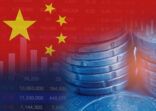ETF assets have surged in recent years, and growth extended during the Covid-19 pandemic, when sales were boosted by extensive online marketing and distribution initiatives, a recent report by Cerulli found.
AUM grew by 50% year-on-year in 2019, and growth continued in the first half of 2020. Equity ETFs took the bulk of non-money-market ETF assets at 94% in 2019, and Cerulli noted that Chinese investors’ sentiments were not dampened by Covid-19 in the first six month of this year, with RMB 58.5bn ($8.6bn) raised for new ETF launches, up by 121.7% compared with the same period in 2019.
“ETF growth has been on the fast lane, as investors get more accustomed to utilising these vehicles for enhanced portfolio construction,” said Ye Kangting, senior analyst with Cerulli Associates.
Factors boosting the popularity of ETFs include their relatively low fees, usually around 0.5% compared with equity mutual funds’ average management fees at around 1.5%, their liquidity, transparency, and diversification, according to Cerulli.
Diversified ETF strategies ranging from broad index to emerging themes, such as ESG and overseas exposure, are available. Broad-based index equity ETFs saw their market share declining from 71% in 2018 to 48.7% in June 2020, while industry ETFs witnessed solid market share growth to 23.3%, from 11.9% in 2019.
Cerulli found that institutions are the main holders of broad-based index strategies, while retail investors generally prefer industry or thematic ETFs.
Technology is a common theme for both institutional and retail investors, and 5G ETFs were well received in the first half of 2020, according to Cerulli, who also highlighted the launch of four ETFs tracking China’s securities listed on the Nasdaq-style Science and Technology Innovation Board (STAR50), in September this year.
Cerulli also believes there is scope for mid- and small-sized managers to grow their assets by developing innovative ETFs, rather than traditional strategies. This can be seen from the reduced market concentration of the top-10 players, from 82.0% in December 2019 to 79.2%.
“To stand out from the competition, managers need to move quickly to market themes, build research into niche areas, improve their track records, and find supportive distributors,” said Ye. However, in response to the sector’s rapid development, the China Securities Regulatory Commission (CSRC) issued draft guidelines governing index funds and ETFs at the end of July to standardise their operations and improve investor protection, for example, through better information disclosure and stricter index selection criteria.
In particular, benchmarked index licensing fees must be paid by ETF managers, not end investors; and a new ETF or index fund can only track indices that have been launched for more than a year.
The Shanghai and Shenzhen stock exchanges subsequently issued complementary rules, adding new requirements for index funds and ETFs.
At the end of July, there were are around 50 ETFs awaiting CSRC approval for launch.
“China’s ETF growth will continue, though it might slow down due to recently enhanced regulatory scrutiny,” said Ye, senior analyst with Cerulli Associates.



















